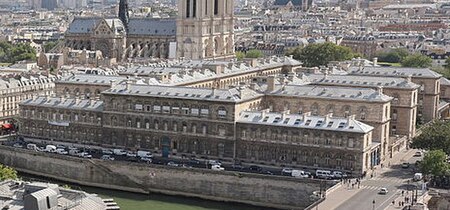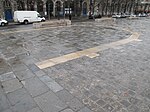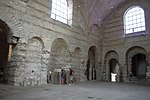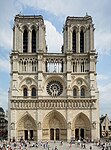Hôtel-Dieu, Paris

The Hôtel-Dieu (French pronunciation: [otɛldjø]) is a hospital located on the Île de la Cité in the 4th arrondissement of Paris, on the parvis of Notre-Dame. It was supposedly founded by Saint Landry in 651 AD, making it the oldest hospital in the city and the oldest worldwide still operating. The Hôtel-Dieu was the only hospital in the city until the Renaissance. While the old Hôtel-Dieu stood by the Seine on the opposite side of the parvise, it was ravaged by fire several times, and was rebuilt for the last time at its present location between 1867 and 1878, as part of Haussmann's renovation of Paris. Nowadays operated by Assistance publique – Hôpitaux de Paris (AP-HP), the Hôtel-Dieu is also a teaching hospital associated with the Faculté de Médecine Paris-Descartes.
Excerpt from the Wikipedia article Hôtel-Dieu, Paris (License: CC BY-SA 3.0, Authors, Images).Hôtel-Dieu, Paris
Rue de la Cité, Paris 4th Arrondissement (Paris)
Geographical coordinates (GPS) Address Phone number Website External links Nearby Places Show on map
Geographical coordinates (GPS)
| Latitude | Longitude |
|---|---|
| N 48.854665 ° | E 2.348808 ° |
Address
Hôtel-Dieu
Rue de la Cité
75004 Paris, 4th Arrondissement (Paris)
Ile-de-France, France
Open on Google Maps










